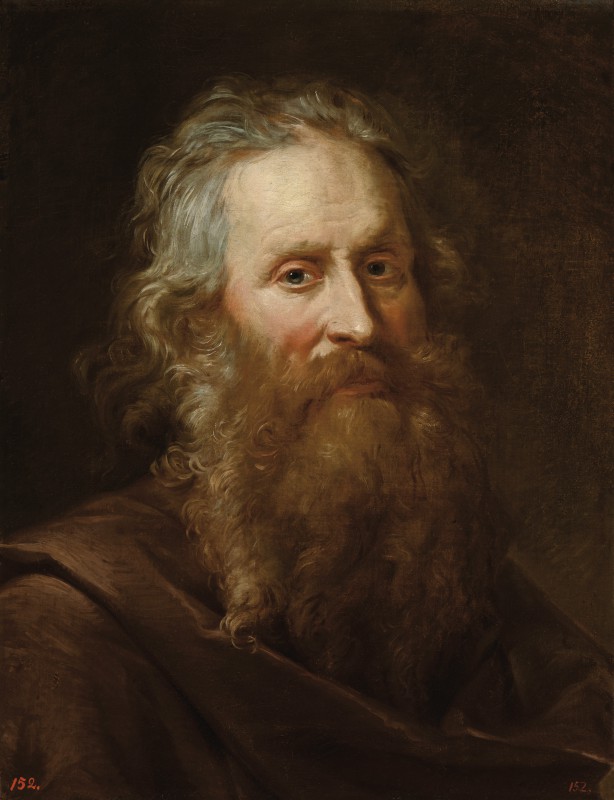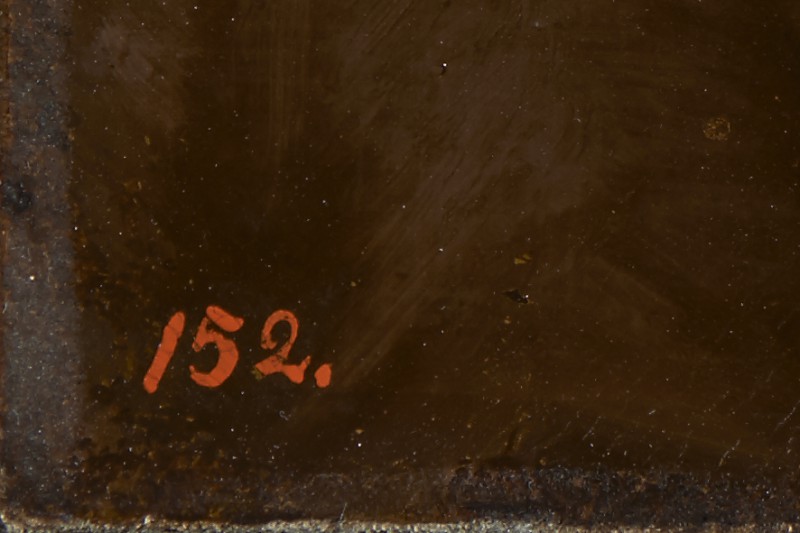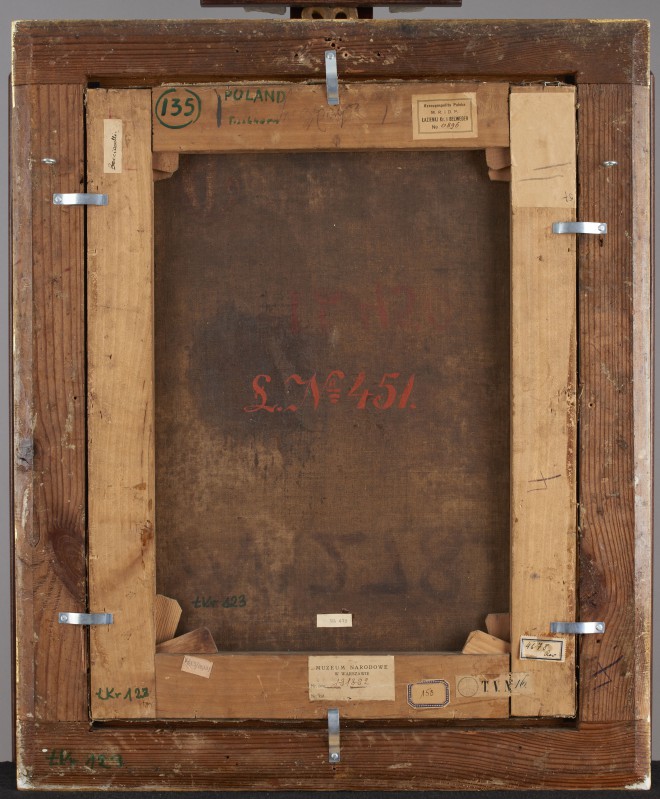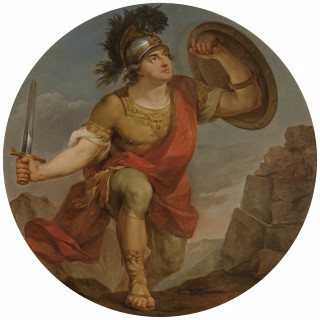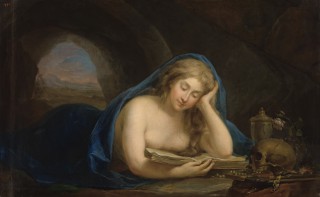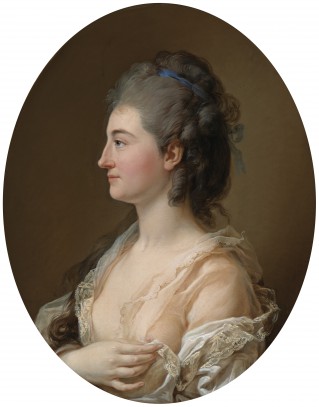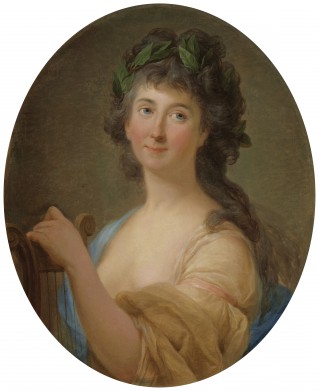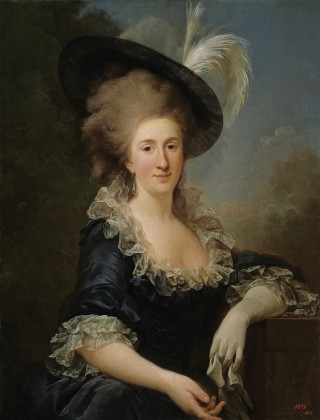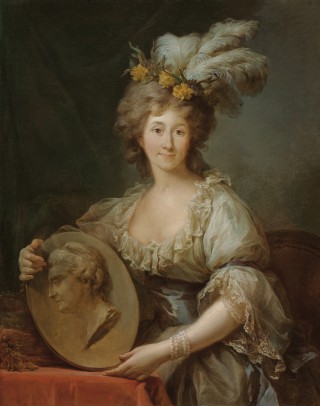Old Man in a Brown Habit
- Date
- before 1783
- Object type
- painting
- Technique
- oil
- Material
- canvas
- Dimensions
- 55,8 x 43,4 cm
- Acquisition date
- 1783
- Location
- The Palace on the Isle - Salle de Salomon, ground floor
- Marks and inscriptions
- red number 152 of the Stanisław August collection, bottom right, repeated on left
- Place of Origin
- Poland (Europe)
- Owner
- The Royal Łazienki
- Museum number
- ŁKr 123
... This image of an old man brings to mind the Italian teste di carattere or the Dutch tronies showing a ‘type’ rather than an actual person. It is also reminiscent of similar depictions of the heads of philosophers, saints and apostles (often painted in series) known both from 17th- and 18th-century Italian, as well as Northern schools. ... It may have been prepared—but ultimately not used—by Bacciarelli for one of the historical paintings or plafonds decorating the apartments in the Royal Castle.
According to Ludwik Hass however, the old bearded man in the Łazienki painting is probably the same person whom Bacciarelli depicted as Aristotle in the Allegory of Wisdom on one of his four overdoors of c. 1777 in the Old Audience Chamber at the Royal Castle in Warsaw (L. Hass, Sekta farmazonii warszawskiej. Pierwsze stulecie wolnomularstwa w Warszawie (1721–1821), Warszawa 1980, figs. 21 and 22 and notes) ... . According to Hass, Bacciarelli gave Aristotle the features of Stanisław August’s former tutor, Jean Luc Louis de Toux de Salvert. He is shown talking to his pupil, young Alexander‒a symbolic figure of young Stanisław August ... . The Łazienki portrait of an old man would therefore be a likeness of Toux de Salvert.
Toux de Salvert (d. 1794), a mathematics’ scholar, excellent draughtsman, and polyglot, was born near Tournai (date unknown) in the then Austrian Netherlands; he settled in Poland in 1749 where he remained until his death. From September 1749 he taught the young Stanisław Antoni Poniatowski architecture, military engineering and drawing. He was an occultist, Freemason, and one of the leading figures in the Freemason movement in Europe and Poland, deputy of the Grand Lodge established in Warsaw in 1769, as well as the head of the Najwyższa Władza Dogmatyczna [Supreme Council] which was a higher ranking office ... . [See D. Juszczak, H. Małachowicz, The Stanisław August Collection of Paintings at the Royal Łazienki. Catalogue, Royal Łazienki Museum, Warsaw 2016, no. 5, pp. 61–63.]
